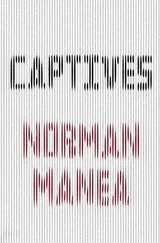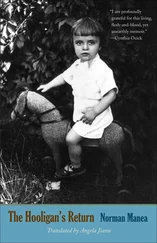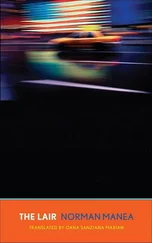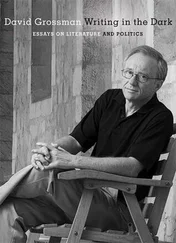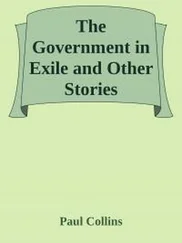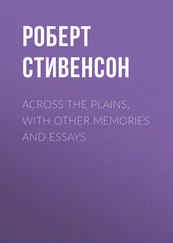Is the disregard for its historical context a conscious decision? The analysis of the main character (his inconsequence, therefore, weakness) seems even more satisfying than the traditional “humanistic” approach (what saves him is “humanity” i.e., weakness, thoughtlessness?) Surely this interpretation is far more optimistic, however, leaving out the bitterness and tragedy (for, after all, there is no victor). A brave, provoking attempt.
The paper is one-sided. In fact, becoming rhinoceros is not, according to the internal logic of the text, an improvement. But the originality and brilliancy of the paper is beyond any question.
Some valid points on the subject of Berenger’s about-face and his hypocrisy in defending the “civilization” he cannot believe in, but she gravely misreads “rhinoceritis” by interpreting it as “progress” of a liberating nature; also, she ignores the way language in the play functions as a rationalizing suprastructure, and accepts the characters’ statements at face value.
Awful. However, her assertion that the actions of a society rely completely upon the balance Rhinoceroses/Berengers at any given time for any given cause / extreme was clear.
This paper is a somewhat irresponsible piece of proto-fascist propaganda. It fails to provide a means of entering the text by neglecting: 1. the distinction between collective (in a noncoercive way) political/historical change and violent conformist suppressions of otherness, and 2. the actual psychological impact of the concrete historical situation that Ionesco is allegorizing.
We could even have discussed some of the theses of the students of 1996. A Polish female student focused on “the rhinocerization of language” in Ionescu’s play (“The Intransparency of Language in Rhinoceros”), analyzing language as a “dramatic object,” revealing its own absurdity and gradual loss of meaning, its capacity to convey ideas and sentiments, in the absence of an appropriate idiom. A crisis of human relationships, which are finally automated by clichés and redundancy.
What the thesis of seven years earlier brought, however, was the shock of turning the interpretation “inside out.” Was this turn in Ionescu’s spirit? “The right to stupidity?” How “stupid” was yesterday’s stupidity? And today’s? I would have liked to have taken up the question with the father of the absurd drama. The fundamental right to candor, doubt, challenge, failure? Forms of freedom, that is, of individuality? I suppose Ionescu would have had a lot to say.
I had seen him in passing during a visit to Paris at the beginning of the 1980s, on an evening that I would spend with Marie-France, his graceful and devoted daughter. He came into the hall for a few moments, lonely and vulnerable, just to meet me. We only exchanged a few unimportant words. There was an affectionate absence on the sad Charlot’s face, a sort of not necessarily alcoholic dizziness.
“Already drunk, after several cocktails (on a Saturday morning), he starts talking to me about his mother,” Sebastian wrote in 1941. Over forty years had passed, it was a Saturday evening, not morning, but the tormented inner self seemed to ask for relief this time too, “as if a burden would lie heavy on him, as if he would smother.” The burden, perhaps a secret rusted by time but still bleeding, was that “precious leper” who was born of a Jewish mother.
His face seemed to bear the trace of that absolute grief of understanding human reality. His “confidence” in man’s ability to save himself, despite the horrors he himself produces, clearly had been the result, not of naïvety or optimism, as the student from Tbilisi believed, but of the ultimate need to “force” the gods’ grace.
When we went into the street, Marie-France told me about Ionescu’s meeting with an important Romanian fiction writer. After skeptically inspecting the roomy apartment, located in the heart of Paris, at Boulevard Montparnasse 96A, the visitor from Bucharest expressed his disappointment that a writer of such standing and a member of the French Academy had not been given a villa with a garden and adequate atmosphere, as socialist Rhinoromania’s “classics” were. The member of the French Academy did not seem offended. He called Marie-France and asked her to show the guest her small room too, so that he could see that the apartment had one more room ….
I was only half listening to this meaningful anecdote. The noble sadness of his face, which I had seen in one of destiny’s moments, was haunting me. I can’t get used to life. Inside myself and from all around I could hear Berenger’s voice reading the author’s unforgettable face.
Translated by Liviu Bleoca, 2000
The last time I saw Saul Steinberg was a year ago, in February. I had invited him and his friend Prudence to dinner, along with two women friends of mine from Milan, a city to which he felt close. A few days later, to thank us, he sent my wife, Cella, and me a copy of a map of interwar Bucharest that Prudence had found in the New York Public Library.
The communication, as so often before, bore his unmistakable mark: the large white rectangular envelope had been folded in half, into a square; at the top left, the sender’s name, street, city, state, and zip code had been stamped in blue ink; at the top right, beneath a row of six 32-cent stamps showing the American flag, a label had been improvised out of what looked like sand-colored wrapping paper. On it the artist had drawn a box and written FIRST CLASS. In fact, the label had come from a roll of masking tape and matched two similar scraps at the bottom and the right of the square. The bottom half of the envelope was covered with six black lines of calligraphic handwriting, indicating the person and the address to which it was to be sent. It seemed a typical Steinberg collage.
The large-scale map folded inside the envelope was a black-andwhite photocopy. The gift was accompanied by a note: “ Dragii mei, A map of Bucure  sti (NY Public Library) the center — enlarged. The map has no date, but from some signs, I can guess, it is 1924 ca. I’ve marked my Strada Palas, Liceul Matei Basarab, Circul Sidoli, etc. We both enjoyed the evening. Cu drag, Saul.” As usual, the body of the text was in English, but the salutation (“ Dragii mei ”—“My dear friends”) and the sign-off (“ Cu drag ”—“Affectionately”) were in Romanian. With a red pencil, he had drawn an arrow from his Strada Palas to Strada Rinocerului (Rhinoceros Street).
sti (NY Public Library) the center — enlarged. The map has no date, but from some signs, I can guess, it is 1924 ca. I’ve marked my Strada Palas, Liceul Matei Basarab, Circul Sidoli, etc. We both enjoyed the evening. Cu drag, Saul.” As usual, the body of the text was in English, but the salutation (“ Dragii mei ”—“My dear friends”) and the sign-off (“ Cu drag ”—“Affectionately”) were in Romanian. With a red pencil, he had drawn an arrow from his Strada Palas to Strada Rinocerului (Rhinoceros Street).
He also spoke to me on the phone about that map, in which he had located the magical Palas district of his childhood. He seemed deeply affected by the past — by the sonority of the old street names, to which his rumbling voice and wonder-filled annotations indeed restored a degree of exoticism and fascination. His voice took on musical inflections as he kept repeating the name Gentil  , Gentil
, Gentil  , a street close to the market that we both remembered well. Then more street names: Feti
, a street close to the market that we both remembered well. Then more street names: Feti  telor (Young Girls), Gîndului (Thought), Gra
telor (Young Girls), Gîndului (Thought), Gra  tioasa (Gracious), Zefirului (Zephyr), Vi
tioasa (Gracious), Zefirului (Zephyr), Vi  sinelor (Sour Cherries), Parfumului (Perfume), Trifoiului (Clover). He said Gra
sinelor (Sour Cherries), Parfumului (Perfume), Trifoiului (Clover). He said Gra  ioasa several times and continued with Dimine
ioasa several times and continued with Dimine  ii (Morning), Stupinei (Apiary), Turturelelor (Turtle Doves).
ii (Morning), Stupinei (Apiary), Turturelelor (Turtle Doves).
Читать дальше
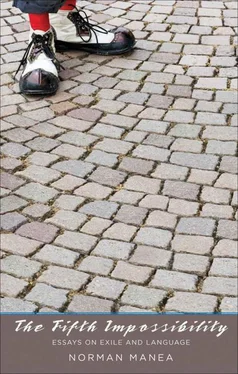
 sti (NY Public Library) the center — enlarged. The map has no date, but from some signs, I can guess, it is 1924 ca. I’ve marked my Strada Palas, Liceul Matei Basarab, Circul Sidoli, etc. We both enjoyed the evening. Cu drag, Saul.” As usual, the body of the text was in English, but the salutation (“ Dragii mei ”—“My dear friends”) and the sign-off (“ Cu drag ”—“Affectionately”) were in Romanian. With a red pencil, he had drawn an arrow from his Strada Palas to Strada Rinocerului (Rhinoceros Street).
sti (NY Public Library) the center — enlarged. The map has no date, but from some signs, I can guess, it is 1924 ca. I’ve marked my Strada Palas, Liceul Matei Basarab, Circul Sidoli, etc. We both enjoyed the evening. Cu drag, Saul.” As usual, the body of the text was in English, but the salutation (“ Dragii mei ”—“My dear friends”) and the sign-off (“ Cu drag ”—“Affectionately”) were in Romanian. With a red pencil, he had drawn an arrow from his Strada Palas to Strada Rinocerului (Rhinoceros Street). , Gentil
, Gentil  ioasa several times and continued with Dimine
ioasa several times and continued with Dimine 